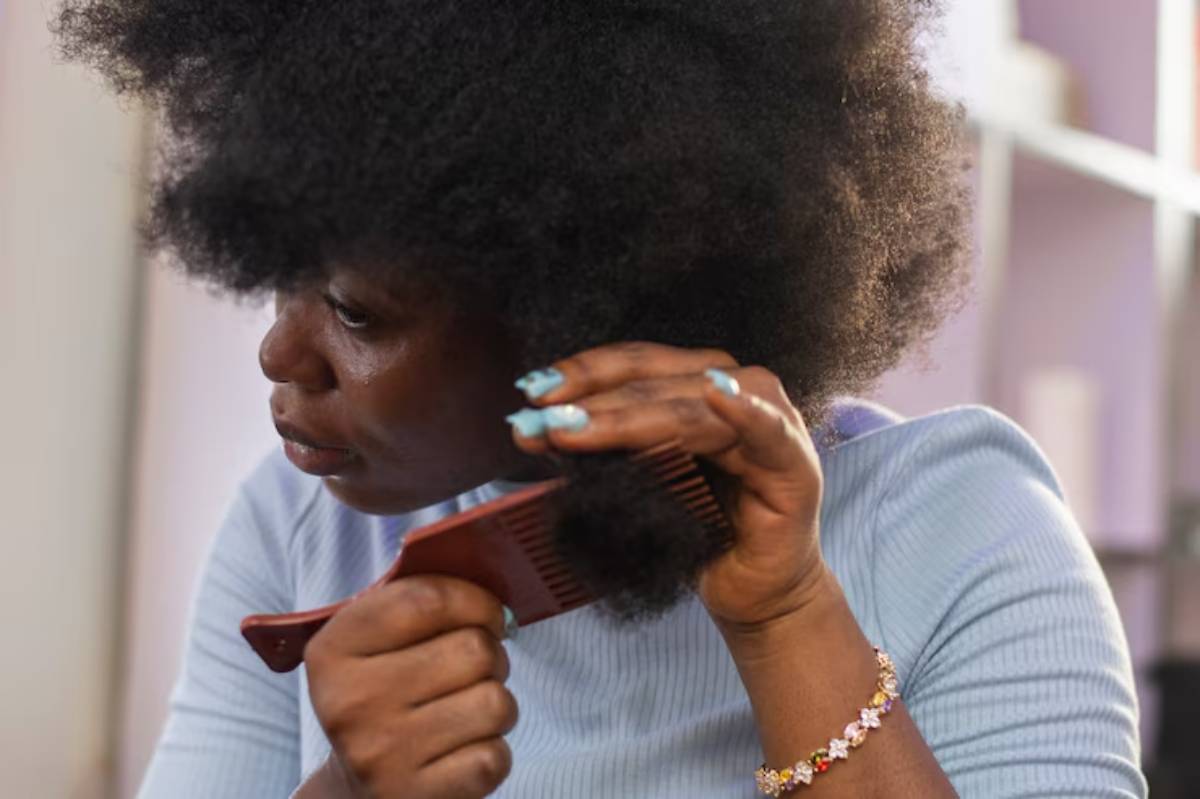
Managing Tangles and Knots in Young Curls
It’s the same scene in homes across the world: a hairbrush, a head full of curls, and a reluctant child. Whether it ends in sighs or tears, detangling curly hair can often feel like a tug-of-war, quite literally. For parents of children with curly or coily textures, managing tangles and knots is one of the most challenging parts of the daily haircare routine.
But what if it didn’t have to be?
With the right tools, products, and techniques, detangling can become a gentle, even enjoyable process. It’s all about understanding your child’s curl pattern, using moisture wisely, and learning how to navigate the detangling process without pain or frustration.
In this guide, we’ll walk you through tangle-free methods that protect your child’s natural texture, reduce stress, and set them up for lifelong healthy hair habits.
Why Young Curls Tangle So Easily
Understanding the Nature of Curls

Curly and coily hair is naturally more prone to tangling. The bends and spirals in the strand cause them to loop around each other, especially during sleep or play. When dry or improperly moisturised, these strands are more likely to knot together or form single-strand knots (also known as fairy knots).
Common Culprits of Tangling
- Dryness or lack of moisture
- Rubbing against cotton pillowcases or car seat straps
- Wearing loose curls to bed without protection
- Infrequent detangling or rough brushing
- Product buildup or lack of slip in styling products
Understanding the “why” behind tangles helps you focus on prevention as much as cure.
The Golden Rule: Moisture Before Manipulation
Dry Brushing? A Hard No.
Trying to brush curly hair when dry is the fastest way to cause pain, breakage, and frizz. Water and moisture soften the strand, making it more flexible and less likely to snap during detangling.
Prep with a Detangler or Leave-In Conditioner
Before reaching for a brush or comb, spray hair with water or apply a detangling product that adds “slip” — this allows the strands to glide past each other more easily.
Great options include:
- Alikay Naturals Lemongrass Leave-In Conditioner
- SheaMoisture Kids Extra Moisturising Detangler
- Cantu Care for Kids Conditioning Detangler
These products are lightweight, nourishing, and designed for young, delicate strands.
Best Tools for Tangle-Free Detangling
Choose Tools That Work With, Not Against, the Curl
The right tools can make all the difference. Avoid small, stiff-bristled brushes that can snag on curls.
Top Picks:
- Wide-tooth comb: Best for thick, curly hair and ideal for starting the detangling process.
- Detangling brush: Look for ones with flexible bristles, such as the Tangle Teezer or Wet Brush.
- Fingers: The most gentle method, great for pre-detangling before using a comb.
Always start detangling from the ends and work your way up to the roots.
Sectioning: The Detangling Superhack
Trying to detangle the entire head of hair at once is overwhelming for both you and your child. Instead, divide the hair into 4 to 6 manageable sections, clipping each out of the way as you go.
This makes it easier to focus, avoids re-tangling areas you’ve already worked on, and gives your child breaks between sections if needed.
Make It a Positive Experience
Tips to Keep Your Child Calm and Engaged
Detangling doesn’t have to be a chore if approached with care. Here are ways to make the process more enjoyable:
- Let them watch their favourite show or listen to music during detangling
- Use gentle language and avoid harsh tugging
- Offer a mirror so they can see the progress
- Praise them for sitting through the process — make it feel like a team effort
Encouraging them to see their curls as something to celebrate starts here.
The Role of Protective Styling
Prevent Tangles Before They Begin
Loose curls left to rub against clothes or pillows will tangle naturally. Protective styles reduce friction and lock in moisture.
Kid-friendly protective styles include:
- Two-strand twists
- Box braids (age-appropriate size)
- Flat twists
- Cornrows with beads or ribbons
- Banded ponytails
These styles keep curls stretched, defined, and safe from external stressors, meaning less detangling during the week.
Want more school-ready ideas? Explore our favourite back-to-school curly hair styles for styles that hold up during class and playtime.
How Often Should You Detangle?
This depends on the child’s curl type, texture, and how they wear their hair. But as a general guide:
- Type 2–3 hair (wavy to loose curls): Every 2–3 days
- Type 3–4 hair (tight curls/coils): Once or twice a week
- If wearing protective styles, Detangle during restyling only
The key is not letting tangles build up to the point of breakage or matting. Regular, gentle sessions prevent problems later.
Sample Detangling Routine (15–20 minutes)

- Section: Divide hair into 4–6 sections using clips.
- Spritz: Lightly dampen one section with water or a leave-in mist.
- Apply: Add a detangler or leave-in with slip.
- Finger detangle: Remove large knots gently.
- Brush or comb: Work from ends to root using a detangling brush or wide-tooth comb.
- Twist or braid: Once the section is detangled, twist or braid it to prevent re-tangling.
- Repeat: Continue section by section.
Keep communication open with your child. If they say “ouch,” pause and reassess.
For a more holistic routine, see our guide to easy curly hair routines for kids and build a weekly plan that includes detangling, styling, and protection.
Don’t Forget the Scalp
Detangling is a great time to check the scalp for dryness, buildup, or irritation. Massage the scalp gently while applying conditioner or leave-in — this stimulates growth and soothes the skin.
For kids with itchy or dry scalps, a few drops of jojoba oil or a child-safe scalp tonic can help.
What to Avoid During Detangling
- Dry brushing: Causes breakage and pain
- Tugging from the root: Always start from the ends
- Using adult products: Many contain heavy fragrances or chemicals not suitable for children
- Neglecting trims: Split ends increase tangling — aim for a trim every 8–12 weeks
- Brushing against the curl pattern: Work with the natural flow of the curls for easier detangling
Conclusion: Detangling with Confidence and Care
Detangling doesn’t have to be a dreaded task. With the right prep, products, and patience, it becomes a nurturing ritual that teaches your child to care for their curls — and love them too.
By turning detangling into a gentle, consistent routine, you’re not only reducing breakage and tears, but also building lifelong confidence in their natural beauty.
So grab that spray bottle, divide those sections, and take it curl by curl — your child’s hair (and you) deserve the peace.


